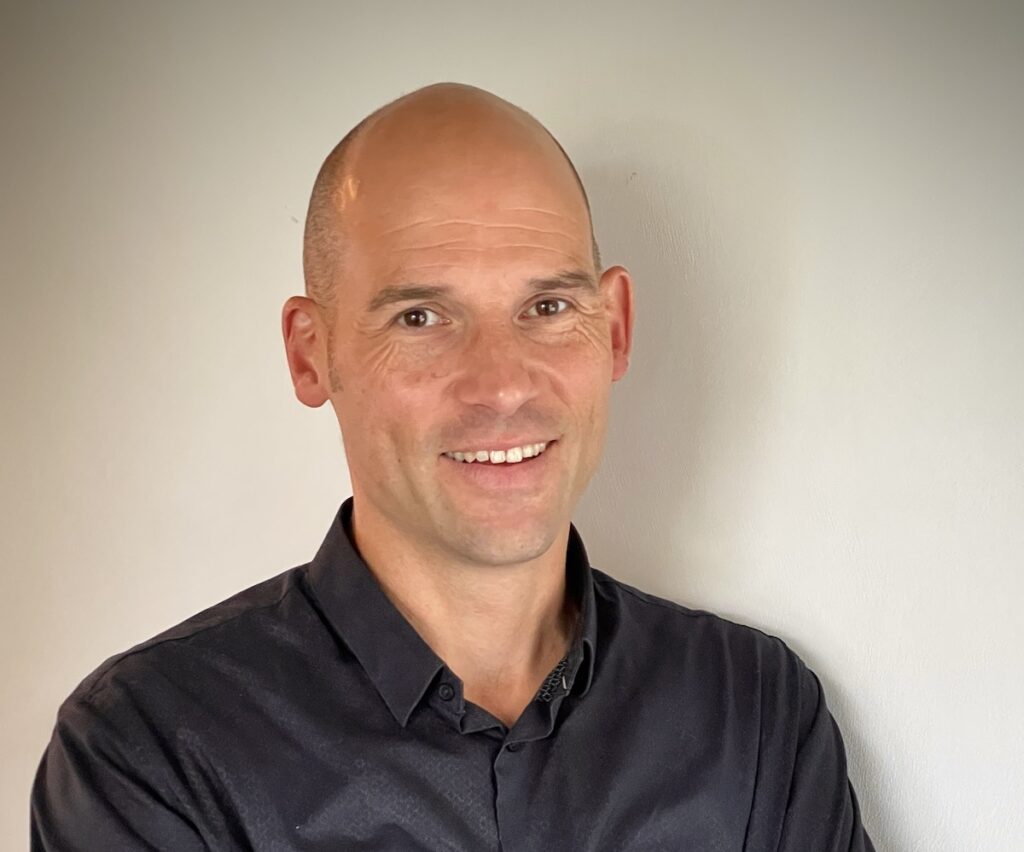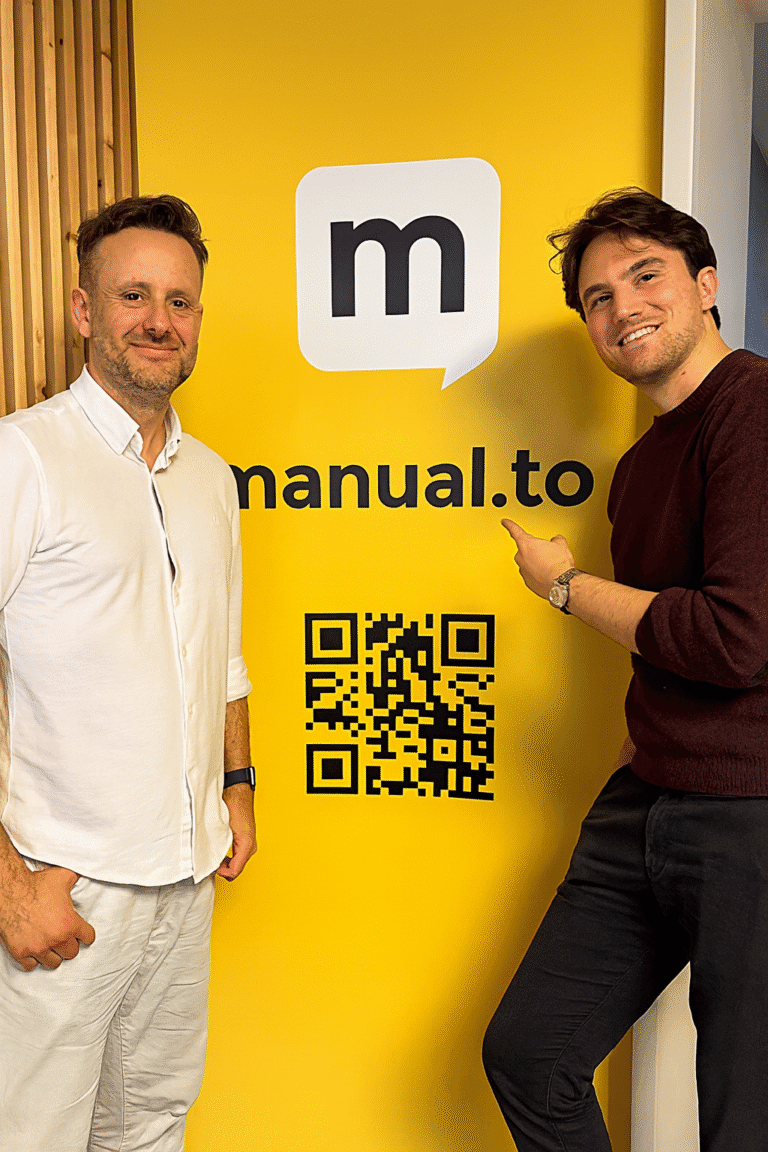Piet van Remortel (ART4L): ‘Multimodal and flexible supervision of operators is the future’

Start2Scale-up partner ART4L focuses on visual, ‘hands-free’ solutions in order to automate processes in the industrial and logistics sectors. The business developed the software architecture Smartpick SDK which supports and/or guides the operator with smart glasses (and augmented reality) and other hands-free technologies such as projections and wrist scanners. We speak with Piet van Remortel, CEO of the young company from Ghent.
How did ART4L come to exist?
ART4L – which stands for Augmented Reality Tools for Logistics – was founded seven years ago as an offshoot from a technological project for Bakery De Trog in Ypres. This semi-industrial organic bakery has experienced substantial growth, which has created various logistics problems. Dirk Matheussen, then COO of the bakery and now founder and CTO of ART4L, thought the solution resided in picking applications with Augmented Reality and smart glasses. A brief explanation of the function and processes will make everything a bit clearer, as this is a complex area.
Production takes place at night. The dough must be made first and this is a severely time-critical process. Then you have the baking process. You have a wide variety of products and a limited number of ovens so careful planning is vital. Fresh bread must be sent to the distribution centres on time and with a high degree of accuracy. The whole process, from production to distribution, must run seamlessly and errors must be avoided at all costs because each mistake can have irrevocable consequences. The expansion of the company and its range was, therefore, a huge challenge both in terms of efficiency and error avoidance.
This complexity is further increased because production is not the same every night and quantities can vary significantly. Fixed racks with trays in the same places do not offer the required flexibility. In his quest for solutions, Dirk realised that the best option for providing this variable capacity was Extended Reality, and in this case Smart Glasses, driven by a suitable vision-picking software. The implementation at De Trog was successful – they were even rewarded with a Factory of the Future Award – so we had the idea of introducing the concept to other sectors too. That is how ART4L was brought into existence.
Can the concept also be applied in other sectors?
The challenges at De Trog are also found in many other sectors, including retail; the size and composition of the orders are highly variable and if errors occur in distribution, the consequences can be very costly. This might involve claims, discussions about compensation, unhappy customers and so on. This, in turn, eats away at your margins.
We realised that our solutions could be repeated but that we would need to bring everything back to the start in terms of software because the needs of each company would probably be different. We then came up with the idea of a software library for various hands-free solution applications that could be offered to the developers of vision-picking systems, which use smart glasses and other items.
So, your core product Smartpick SDK was created?
Yes, SDK stands for Software Development Kit. It is a toolbox that developers can use for various solutions for the visual and hands-free guidance of operators so that they do not have to spend time developing their own software. We share it with other IT companies or IT developers’ departments.
Our model is atypical in that we offer them the SDK kit, training and documentation free of charge. When they implement it for a customer, they then pay a licence fee to ART4L. That is our revenue model.
Can you provide an example?
In South America, where there is a great deal of interest in Smartpick SDK, voice picking has been a dominant technology for around 20 years. They are, however, aware of the limitations and realise that their software is outdated. As a result, interest in vision picking is growing. However, the developers who wish to switch to vision picking, projectors, scans, and so on are limited in terms of expertise about the necessary software and often lack the resources to invest in it. They can, therefore, build based on our tool kit.
You talk about ‘vision picking’, how does this differ from ‘pick to light’?
Pick to light uses a visual cue, usually a fixed light above the rack, to notify the operator where he/she must take or place something. As the number of lights expands, it becomes a hardware solution that is expensive and lacking in flexibility. With vision picking, you no longer need a fixed installation because the operator is assisted visually. Particularly when it comes to variable quantities and ranges, a fixed installation is inefficient, as we learned at De Trog. A vision-picking solution is more flexible and can deal with this variable capacity.
In general, it is also a more efficient method for guiding operators in their work. If a light turns on over a rack or container, that indicates where they should be but the number of people that can work in a zone is limited. With vision picking, you can use smart glasses or a projection at a height of 12 metres to clarify which box they can pick from and how many items are required. Above that, smart glasses issue spoken instructions to the operator that can be confirmed by voice and/or actions may be initiated. A combination of audio and visual is an exceptionally efficient multimodal solution that can be beautifully rolled out via Smartpick SDK.
But is that the best way to tell the operator where to pick items?
Well, not necessarily. That is precisely why we integrated the visual guidance in a positioning solution. To this end, we work with Pozyx, a Belgian specialist in Ultra-Wide Band positioning and a provider of RTLS systems (real-time location systems). An RTLS knows where the operator is located, with an accuracy of less than one metre. When he moves, the system knows that too, which is similar to a GPS system.
The WMS knows where the goods are located and, with the SDK from ART4L, the operator is guided to efficiently pick the item at this place. By combining this with an RTLS, the operator can be supported to ensure that it takes the best and most efficient route through the warehouse to get there. An additional advantage is that all operators and vehicles are connected with one another. If a forklift is blocking a lane in the warehouse, the system will send the picker to the next location. How that works in practice can be seen in this video.
What makes Smartpick SDK even better?
The SDK is built to use various visual guidance systems so it is not dependent on one particular technology. But what also sets it apart is that the kit is made up of three layers: Smartpick I/O (input/output) for the data exchange with the WMS and the positioning system; Smartpick FLOW is a functional step-by-step plan for the specifications and implementation of the IT systems; and Smartpick TILES ensures that the solution from the developer works across various devices, without mobile coding or customisation being required. Thanks to these three components, a developer has over 90% of the required building blocks.
Vision picking has been designed to guide operators, i.e. people, even though the logistics process is becoming increasingly robotised. Isn’t that a problem for ART4L?
No, not really. Not all logistics processes will be robotised or automated; humans will remain part of many operations although there may be more automation around them. It will still be necessary to guide them throughout the chain.
Also, the idea that all logistics operations can be fully robotised is a fantasy. If you always have to pick shoe boxes with the same dimensions or the same size, that is not a problem. But, if you are dealing with complex or heterogeneous products, human intervention is vital. This is clear from e-fulfilment for e-commerce, which are usually hybrid operations.
Does this include an environment where Goods-to-Person picking is gaining ground?
The term says it all: Goods-to-Person. So, yes. In this type of situation, you always have 10% or 20% of the products that are too heavy or large for the G2P systems. These must be picked by people. There are also logistics environments where dynamic replanning is part of the process and when goods often change location, vision picking is exceptionally efficient, given its flexibility.



